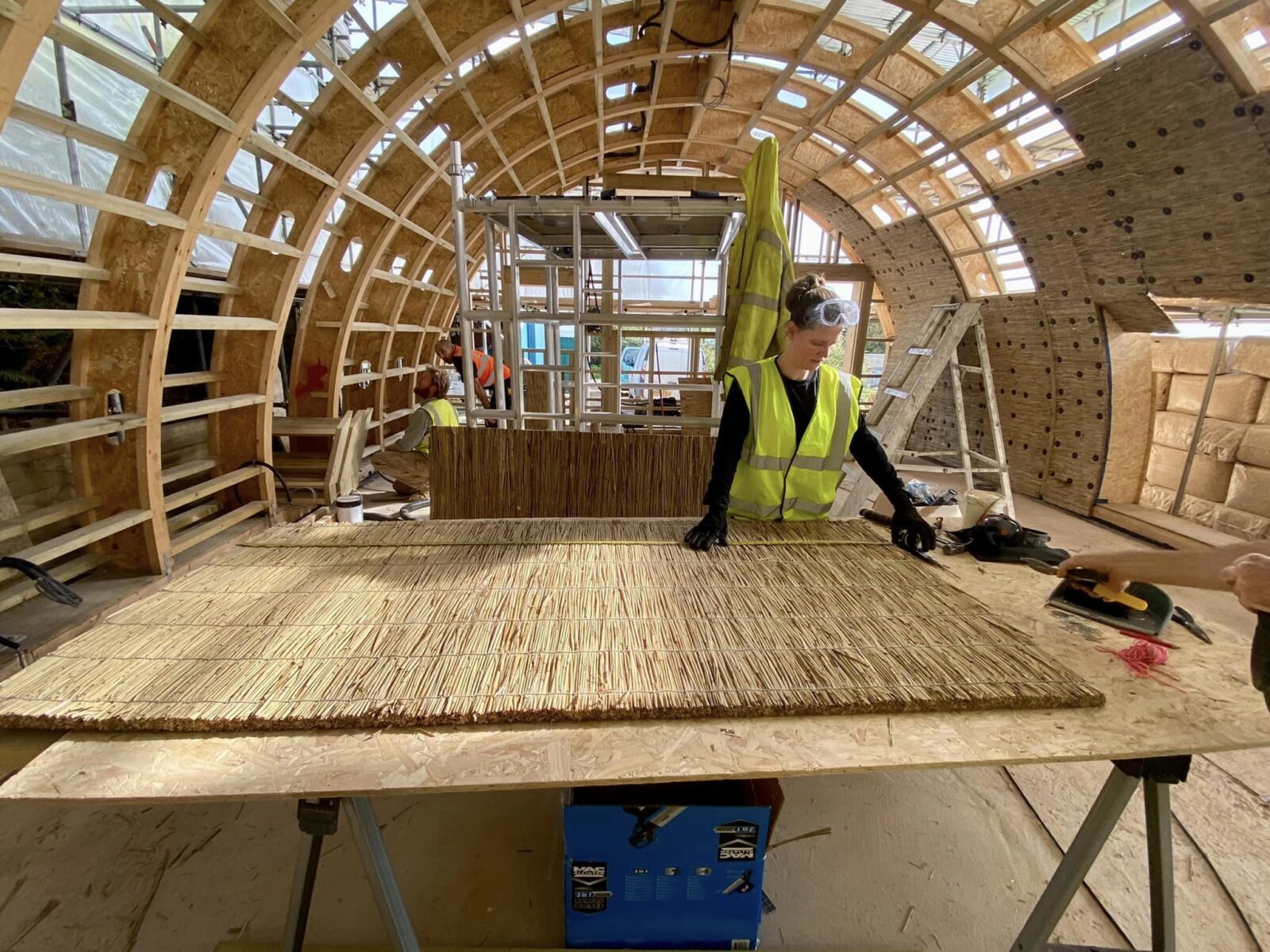Working with glulam and sustainable insulation materials
BACK TO BLOG MAIN PAGE
As the focus on sustainability in building is increasing, we are seeing more and more demand for locally grown timber. As well as the glulam we produce, we’ve also worked on several projects which, alongside the timber chosen, have sourced other sustainable materials to work with.
Working with sustainable building materials can bring many benefits. Not only are you reducing the impact of your project on the environment, but these materials can also be lighter, cheaper, and easier to work with.
Here are just a few of the examples we’ve come across through some of the projects we’ve recently helped create.
1. Sheep’s Wool – Tom Bedford’s Building
Sheep’s wool is a 100% natural product which is suited for several insulation purposes. Wool absorbs damp well, bearing high percentages of moisture without losing its insulation properties. It also has a natural moisture regulation, helping prevent the development of mould.
It is a popular material for filling hollow spaces between roofs, walls, and floors as it prevents the flow of air and trap in heat.
When Tom Bedford from UK Hardwoods had the idea to build a woodshed from glulam and got in touch with us to design and manufacture the frame, the wood used by Buckland to make the glulam frame came from land owned by the Bedford family – having been earmarked for felling due to larch disease.
The building is a great example of local businesses working together to make use of timber in a sustainable and creative way. The entire life cycle of the building was important, how it was built, how it functioned, and even its potential deconstruction in the years to come was considered.
Larch glulam posts and a pitched curved rafter formed the structure, which was then clad with larch and completed with the sheep’s wool insulated panels.
It ended up being the largest UK grown glulam structure made (we think, see our blog about the building here).
2. Hempcrete – The Vinery
Hempcrete, also known as Hemp concrete or Hemp lime, is a is bio composite material, a mixture of the core of the hemp plant, lime and water.
Hempcrete is often used as a material for construction and insulation as it is easier to work with than traditional lime mixes and acts as an insulator and moisture regulator. It is not as brittle as concrete and therefore does not need expansion joints, making it a lightweight insulating material.
On a recent project that we worked on, The Vinery, hempcrete was the insulating material of choice. Poured in between the curved glulam structure we created it added a layer of lightweight but effective insulation.
The main contractor for this project was Terra Perma Geo, who were experienced in the use of hempcrete. You can read more about Buckland’s involvement in the Vinery project here.
3. Hemp blocks – Cherry Bank
Hemp blocks are one of the most accessible forms of hempcrete. They are light, easy to handle and don’t require any special tools or equipment, making them very easy to use.
Because of this, and their size, they are often a good sustainable insulation choice and enable a quick installation on site.
Cherry Bank project was a two-storey spruce glulam frame extension for a family home. The design was for a glulam portal frame which would house a large open plan kitchen and living area, and some extra bedrooms. This project used hemp crete blocks as a non-structural infill between the glulam columns to insulate the space and form the beginnings of the internal wall before it was clay plastered using hempblock.co.uk own creation which they produce and supply.
4. Straw – New Barns Farm
Straw is a renewable resource that acts as excellent insulation and is easy to build with.
Straw is made of cellulose, which is a poor thermal conductor surrounding pockets of air, also a fairly poor thermal conductor. However, when working with straw for insulation, you use compacted bales of straw, and the sheer volume of the straw bale, in combination with the insulative qualities of the material then makes it a great thermal resistor.
New Barns Farm is a new commercial workshop that was commissioned in 2022. Built by SEC Builders, using a large spruce glulam portal frame this building also used straw as it’s sustainable material of choice to insulate the building and provide the wall structure.
If you’re looking for more information or have a question about our experience with sustainable building materials for your next project do get in touch.












